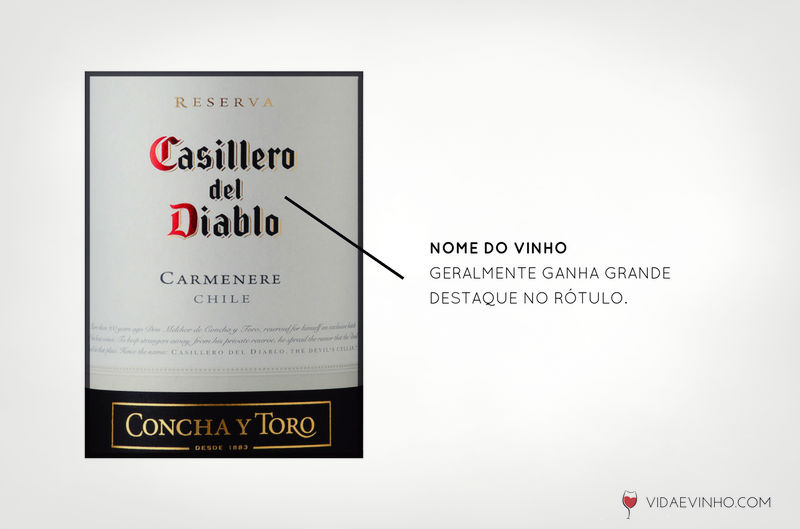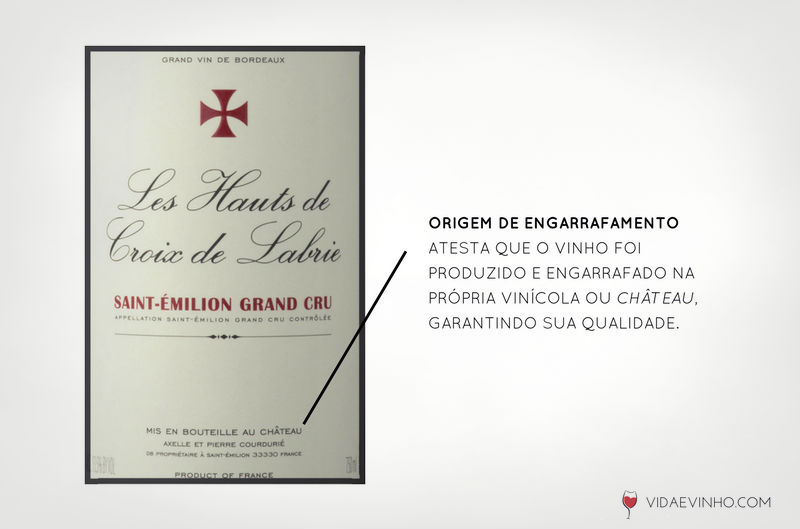
Although it is simple, this is a very common doubt and that causes some confusionwhen selecting a wine for purchase and consumption. Some fundamentalobservations are passed through the wine label. However, you have to know how tounderstand this information. Only the format of the bottle, the luxury and thebeauty of the label are not enough to determine your choice. It is necessary to beattentive to all aspects and characteristics of a good wine. Much of this is expressedand identified in the labels that act as a kind of wine ID
Press Room Enovírtua
The label is the birth certificate of the wine.To know exactly what you are buying, it is essential to understand the main informationcontained in it.In this way, it minimizes the chances of acquiring a product that does not correspond toyour expectations.In this article we will see labels of wines from different regions, some simpler and othersmore complex, all with fundamental information to choose a good wine.
Keep reading to learn how to make the correct reading of a wine label and you willnever be confused again at the time of purchase.
Two basic types of wine labels
Basically, there are two types of wine labels that we can find:
1) Labels of wines from the new world
They emphasize mainly the name of the wine and the grape (s) that compose it (Merlot, Cabernet Sauvignon, Chardonnay, among others). They are common in wines from countries such as Brazil, Argentina, Chile, South Africa, the United States, Australia, among others.
2) Labels of wines from the old world
They emphasize the producer and the region where the grapes were cultivated (Bordeaux, Champagne, Rioja, Chianti, among others). They are common in wine countries such as France, Italy, Spain, Portugal, among others.


Main information found in wine labels
Below you will see different wine labels of the new and old world, where I highlight themost common terms found on these labels.
Wine name

The name usually gains great prominence on the label, mainly in new world wines.
Many wineries have several wine lines and, to identify them, each line receives its ownname.
The Chilean winery Concha y Toro, for example, owns the wines Don Melchor,Marques de Casa Concha, Casillero del Diablo, among others.
Producer’s name

The name of the producer often appears with emphasis.
It can be a large company or a small family winery.
Some producers do not give a specific name to their wines, using only the name of thewinery itself, often followed by the name of the grape and the harvest.
Variety of grapes

Many wines (mainly from the new world) present on the label one or more grapes thatwere used in their production.
This helps the consumer to have an idea of the style and flavor of the wine they arebuying, as well as, of course, the dishes that can be harmonized with it.
When wine is produced with only one grape variety (or a large percentage of it) it iscalled varietal wine.
If it is produced with two or more grapes, it is named as cutting or assembly wine.
To get a better understanding, read the full article on varietal wines and cut wines.
Region of origin

The region where the wine was produced bears more prominence in old-world winelabels, where it often indicates the superior quality of a wine.
Some regions are known to have the climate and soils suitable for the cultivation ofcertain grapes, as in the case of the Chablis region, in France, famous for the productionof white Chardonnay grapes, or Bordeaux, known for its red wines, base of CabernetSauvignon and Merlot.
In addition to the region of origin, many wines highlight the subregions – smaller areaswith soils and micro-climates with particular characteristics found within larger regions.
An example is the commune of Saint-Émilion, in Bordeaux, in France.
In general, the more specific is the origin of the grapes, being able to be a subregion oreven a certain vineyard, the more refined the wine and the higher its price.
Vintage

The harvest indicates the year in which the grapes were taken.
It is very important information, since some wines can improve over time, while otherslose their best characteristics.
In general, most white and rosé wines should be consumed within 2 or 3 years, whilemost red wines should be consumed in up to 5 years.
There are also wines on watch, those that can evolve for many years and even decades.
The wines that do not have the harvest on the label, like most of the sparkling wines and O porto wines, are decorated with grapes harvested in different years.
Appellation of origin

It is a kind of seal of quality granted by governmental institutions of different countries,mainly of the old world.
The certification guarantees that the wine has been produced within a defined region,respecting all the production rules imposed on this region.
Wineries that acquire the seal have a high reputation and the consumer gains, at least intheory, the guarantee of acquiring a quality product.
Some more common denominations of origin in wine labels are:
• AOC – Appellation d’Origine Contrôlée (France)
• DO – Denominación de Origen (Spain) and Denominação de Origem (Brazil)
• DOC – Denominação de Origem Controlada (Portugal) and Denominazione diOrigine Controlata (Italy)
• DOCG – Denominazione di Origine Controllata e Garantita (Italy)
• QBA – Qualitätswein Bestimmter Anbaugebiete (Germany)
Maturation and aging

Wines that had some special care during the harvest, selection of grapes, winemakingand that ones which went through a period of maturation in oak barrels and aging in thebottle itself, generally stamped on their labels the terms Riserva, Reserva and GranReserva.
However, the use of the terms is not the same in all countries, since only wine regions ofSpain and Italy have specific rules for the use of nomenclatures.
The other wine countries are not prohibited from using the terms, but since there are noregulations outside of Spain and Italy, many producers use them without muchjudgment.
The term Reserved does not mean absolutely nothing.
The wines that carry this title are, in most cases, the entry wines of many wineries, thatis, the simplest wines produced by the producer.
To understand better, read the full article on Reserve and Reserved Wines.
Alcohol graduation

Alcohol contributes to the longevity of wine.
The more alcohol it has, the more it tendsto last, be it closed or even after it is opened.
The wines with the highest alcohol content will be warmer and heavier on the palate.
Fortified wines are those that have more alcohol, and can reach up to 22% vol.
Other information found in wine labels
Next you will see other information that can be found on wine labels. These, are not ascommon as the previous ones, but they deserve to be mentioned.
Bottling origin

This information shows that the wine was produced and bottled in the winery or castleitself.
Some commercial wine companies buy grapes or own wine from some wineries and dotheir own bottling and labeling.
Formerly this practice was not well seen, since there was not much control of what these companies did with the wine after buying it for resale.
As some of these wines reached consumers with quality well below expectations, manywineries began to emphasize on their labels that the wines were produced in bottling atthe source, that is, in the winery itself.
The most common mentions of the origin of wine in the labels are:
• Mis en Bouteille au Château (France)
• Mis en Bouteille à la Propriété (France)
• Mis en Bouteille au domaine (France)
• Embotellat a la Propietat (Spain)
• Imbottigliato all’origine (Italy)
• Erzeugerabfüllung (Germany)
Age of the vines

The old vineyards tend to produce fruits of more concentrated flavors that producewines considered superior.
To add more value to wine, some producers show this information on their labels,generally using phrases such as:
• Viñas Viejas
• Vieilles Vignes
• Old Vines
• Among others
Quality of the terroir or reputation of the winery (Cru)

The term Cru was created in France, more specifically in Burgundy, to identifypart of a vineyard whose wine presents certain specific characteristics,harvested after harvest.
The grounds considered of better quality, won the names Grand Cru andPremier Cru.
Unlike Burgundy, in Bordeaux the term Cru is used to identify the most reputableChâteaux.
Source: http://vidaevinho.com/como-ler-um-rotulo-de-vinho/






